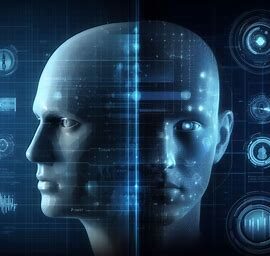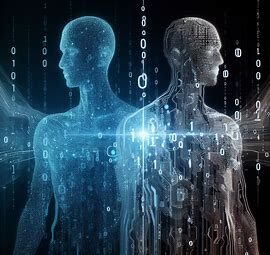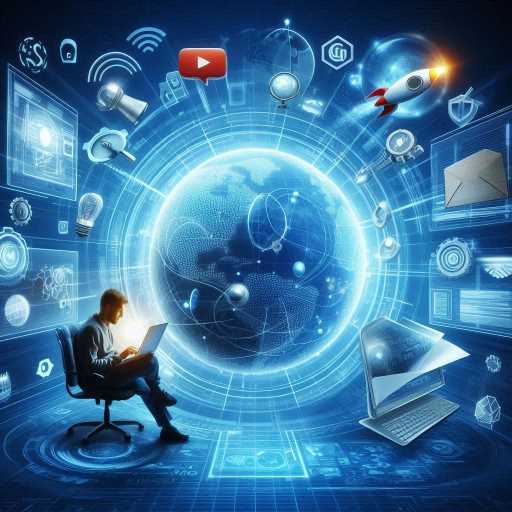In today’s rapidly advancing technological landscape, a concept known as the “digital twin” is gaining significant traction. This innovative approach to representing real-world objects, systems, or processes in a digital environment has the potential to revolutionize various industries. In this blog post, we will explore the fascinating world of digital twins, their applications across different sectors, and the impact they are having on our lives.
What Are Digital Twins?

A digital twins are virtual replica of a physical object, system, or process. It’s not a static image but a dynamic model that evolves and synchronizes with its real-world counterpart in real time. This synchronization is achieved through a continuous flow of data from sensors, IoT devices, and other sources.
Imagine having an exact digital copy of a manufacturing plant, a piece of machinery, a building, or even the human body. These digital twins provide a detailed and interactive representation, allowing engineers, scientists, and professionals to monitor, analyze, and simulate the behavior of their physical counterparts. The result is improved decision-making, enhanced efficiency, and cost savings across various industries.
Applications Across Industries

1. Manufacturing and Industry 4.0:
Manufacturing of the industry is at the forefront of digital twins adoption. By creating digital twins of factories, production lines, and equipment, manufacturers can optimize operations, reduce downtime, and enhance overall efficiency. Real-time data from sensors can be analyzed to predict maintenance needs, preventing costly breakdowns.
2. Healthcare:
In the field of healthcare, digital twins are used to model the human body. These anatomical replicas enable physicians to plan and practice surgeries, simulate disease progression, and customize treatments for individual patients. Personalized medicine is becoming a reality thanks to the insights gained from digital twins of patients.
3. Smart Cities:
Cities around the world are harnessing the power of digital twins to become smarter and more efficient. Urban planners create digital replicas of entire cities, including infrastructure, transportation systems, and public services. This allows for better management of resources, traffic optimization, and improved disaster preparedness.
4. Aerospace and Automotive:
In aerospace and automotive industries, digital twins are used to simulate and test designs, predict performance under various conditions, and optimize fuel efficiency. This leads to safer and more fuel-efficient vehicles and aircraft.
5. Energy and Utilities:
Digital twins play a crucial role in managing energy grids and utility infrastructure. By creating virtual models of power plants, substations, and distribution networks, utilities can monitor real-time data, predict equipment failures, and optimize energy production and distribution.
The Technology Behind Digital Twins

Creating a digital twins involves several key technologies:
- IoT Sensors: These sensors collect data from the physical object or system and transmit it to a central platform.
- Cloud Computing: The data collected is stored and processed in the cloud, allowing for scalability and accessibility.
- Big Data Analytics: Advanced analytics tools process the vast amount of data generated by digital twins, providing insights and predictions.
- Machine Learning: Machine learning algorithms can analyze data and improve the accuracy of predictions over time.
- 3D Modeling: 3D models are used to create realistic representations of physical objects or environments.
- Simulation Software: Simulation software allows for the testing of scenarios and predictions in the digital twin environment.
Benefits of Digital Twins
The adoption of digital twins offers numerous benefits across various sectors:
- Improved Decision-Making: By providing real-time data and simulations, digital twins enable better-informed decision-making, reducing risks and costs.
- Predictive Maintenance: In manufacturing and infrastructure, digital twins can predict when equipment is likely to fail, allowing for proactive maintenance.
- Cost Savings: Optimizing operations and reducing downtime can lead to significant cost savings over time.
- Enhanced Product Development: In industries like aerospace and automotive, digital twins aid in designing and testing new products more efficiently.
- Personalized Healthcare: Digital twins of patients enable personalized treatment plans based on individual characteristics.
- Environmental Impact: Digital twins can help cities and organizations reduce their environmental footprint through better resource management.
Challenges and Future Outlook
While digital twins hold immense promise, there are challenges to overcome, including data security and privacy concerns, integration with legacy systems, and the need for skilled professionals to manage and interpret the data.
Looking ahead, digital twins are likely to become even more prevalent. As technology continues to advance, the accuracy and capabilities of digital twins will increase. Additionally, industries that have been slow to adopt this technology may recognize its potential and integrate it into their operations.

Digital twins are reshaping industries and our daily lives by providing us with powerful tools to replicate and understand the physical world in a digital space. From manufacturing to healthcare, from smart cities to aerospace, the applications are vast and continually expanding. As technology continues to evolve, so too will the impact of digital twins, making our world smarter, more efficient, and more connected than ever before.
In this ever-changing landscape, the concept of digital twins is a shining example of how innovation and technology can come together to solve complex problems and create a brighter future for us all.




Leave a Reply